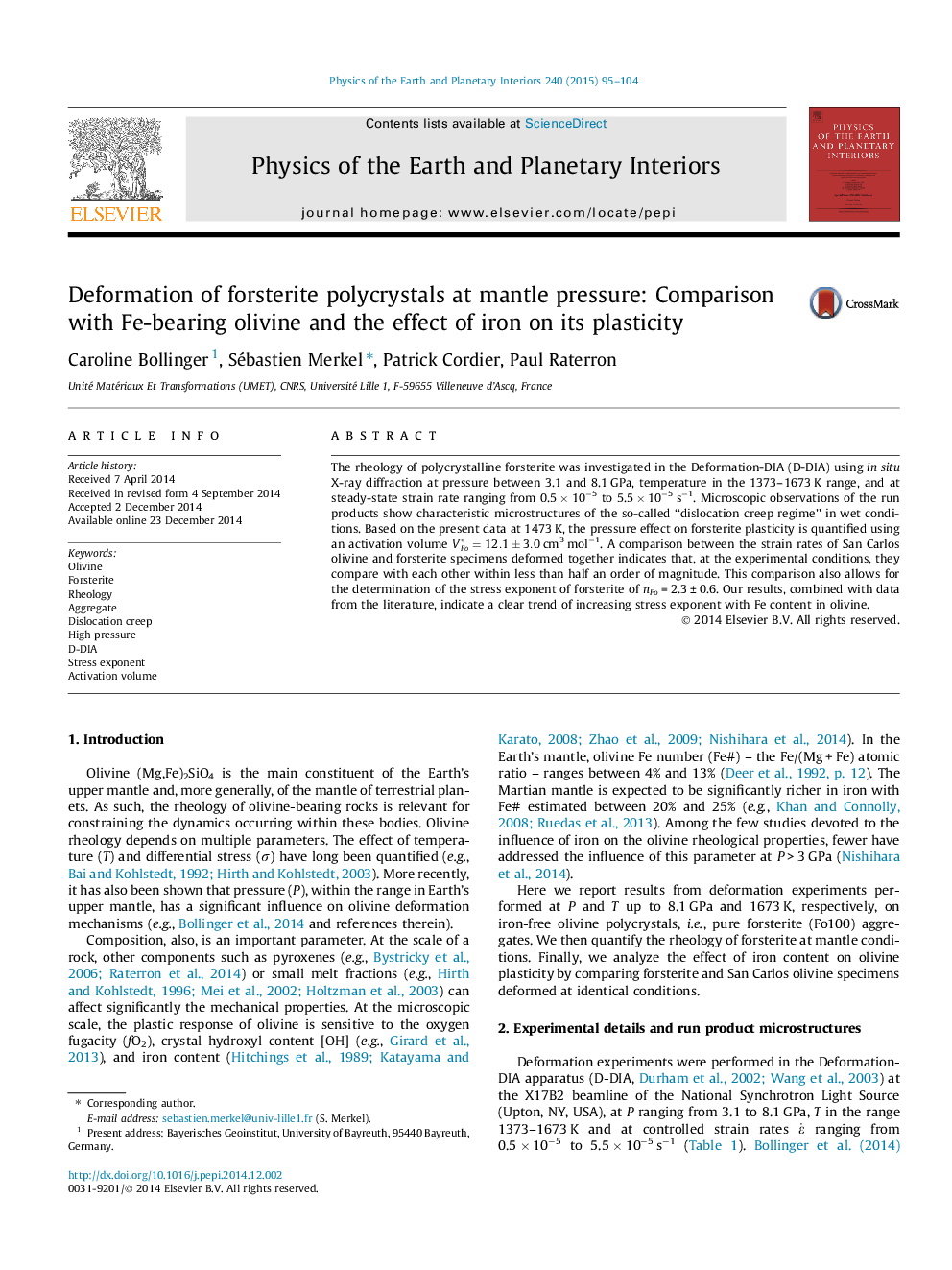| Article ID | Journal | Published Year | Pages | File Type |
|---|---|---|---|---|
| 4741541 | Physics of the Earth and Planetary Interiors | 2015 | 10 Pages |
•Activation enthalpy for forsterite polycrystals rheology increases linearly with P.•For forsterite polycrystals at 1473 K and up to 8.1 GPa, V∗ = 12.1 ± 3 cm3 mol−1•The stress exponent of forsterite polycrystals is nFo = 2.3 ± 0.6.•The stress exponent increases with Fe content in olivine.
The rheology of polycrystalline forsterite was investigated in the Deformation-DIA (D-DIA) using insitu X-ray diffraction at pressure between 3.1 and 8.1 GPa, temperature in the 1373–1673 K range, and at steady-state strain rate ranging from 0.5 × 10−5 to 5.5 × 10−5 s−1. Microscopic observations of the run products show characteristic microstructures of the so-called “dislocation creep regime” in wet conditions. Based on the present data at 1473 K, the pressure effect on forsterite plasticity is quantified using an activation volume VFo∗=12.1±3.0 cm3 mol−1. A comparison between the strain rates of San Carlos olivine and forsterite specimens deformed together indicates that, at the experimental conditions, they compare with each other within less than half an order of magnitude. This comparison also allows for the determination of the stress exponent of forsterite of nFo = 2.3 ± 0.6. Our results, combined with data from the literature, indicate a clear trend of increasing stress exponent with Fe content in olivine.
